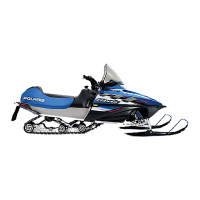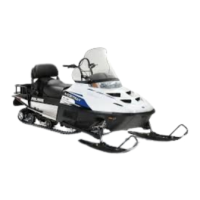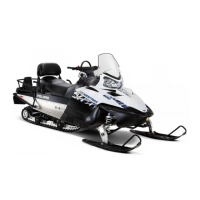8.5
Steering and Suspension Systems
8
9923396 - 2007-2012 EDGE/Widetrak LX Service Manual
©2011 Polaris Sales Inc.
OVERVIEW / SPECIFICATIONS
Inspection
When inspecting steering and suspension components for
wear or damage, always replace parts as necessary.
Refer to the assembly exploded views in this chapter for
identification of components and torque values of
fasteners. Make notes of the direction a bolt goes through
a part, what type of nut is used in an application, etc.
Some of the fasteners used in the IFS are special and
cannot be purchased at a hardware store. Always use
genuine Polaris parts and hardware when replacing front
end components. Review steering adjustment guidelines
before making adjustments.
The following components must be inspected at this time.
• Tie rods and tie rod ends
• Torsion bar and bushings / linkage (where
applicable)
• Handlebars and steering post assembly
• Spindles and bushings
• Skis and skags
• Pitman arms / Idler arms
• Shock absorbers, shock mounts, springs
• All related fasteners - check torque. Refer to
steering exploded views at the beginning of this
section.
• Grease all fittings.
Always follow rod end engagement guidelines. Maximum
setup width must be checked whenever front suspension
components are adjusted or replaced.
Camber / Toe Specifications
Maximum width and camber measurements are to be
taken with the front end elevated and shocks at full
extension.
Toe alignment is measured at ride height. This means that
the machine is on the ground and resting at normal ride
height, not full rebound. Measure at a point 10” (2.54cm)
forward of the ski mount bolt and 10” (2.54cm) behind the
ski mount bolt, preferably on the center line of the carbide
skags.
Width is measured from the center of the spindles.
Camber measurement is taken from the top of the
alignment bar to the top of the ski mount hole in the spindle
with the bushing removed.
Springs
When the front suspension encounters a bump, the force
of the bump compresses the spring. If the bump force is
450 pounds, a 100 #/in. spring will compress 4.5 inches.
A 150 #/in. spring will compress 3 inches. If the
suspension had 4 inches of spring travel, the 100 #/in.
spring would bottom out, while the 150 #/in. spring would
have one inch of travel remaining.
• Free length - the length of a coil spring with no
load applied to the spring
• Installed length - the length of the spring between
the spring retainers. If the installed length of the
spring is less than the free length, it will be pre-
loaded.
• Spring rate - the amount of force required to
compress a coil spring one inch. For example, if
150 pounds of force are required to compress a
spring 1 inch, the spring rate would be 150 #/in.
• Straight rate spring - the spring requires the same
amount of force to compress the last one inch of
travel as the first one inch of travel. For example, if
a 150 #/in. spring requires 150 pounds of force to
compress it one inch, 300 pounds of force would
compress it two inches, 450 pounds of force would
compress it three inches, etc.
• Progressively wound spring - the rate of the spring
increases as it is compressed. For example, a
100/200 #/in. rate spring requires 100 pounds of
force to compress the first one inch, but requires
200 additional pounds to compress the last one
inch.
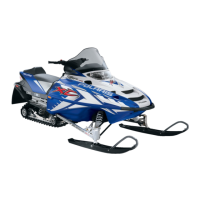
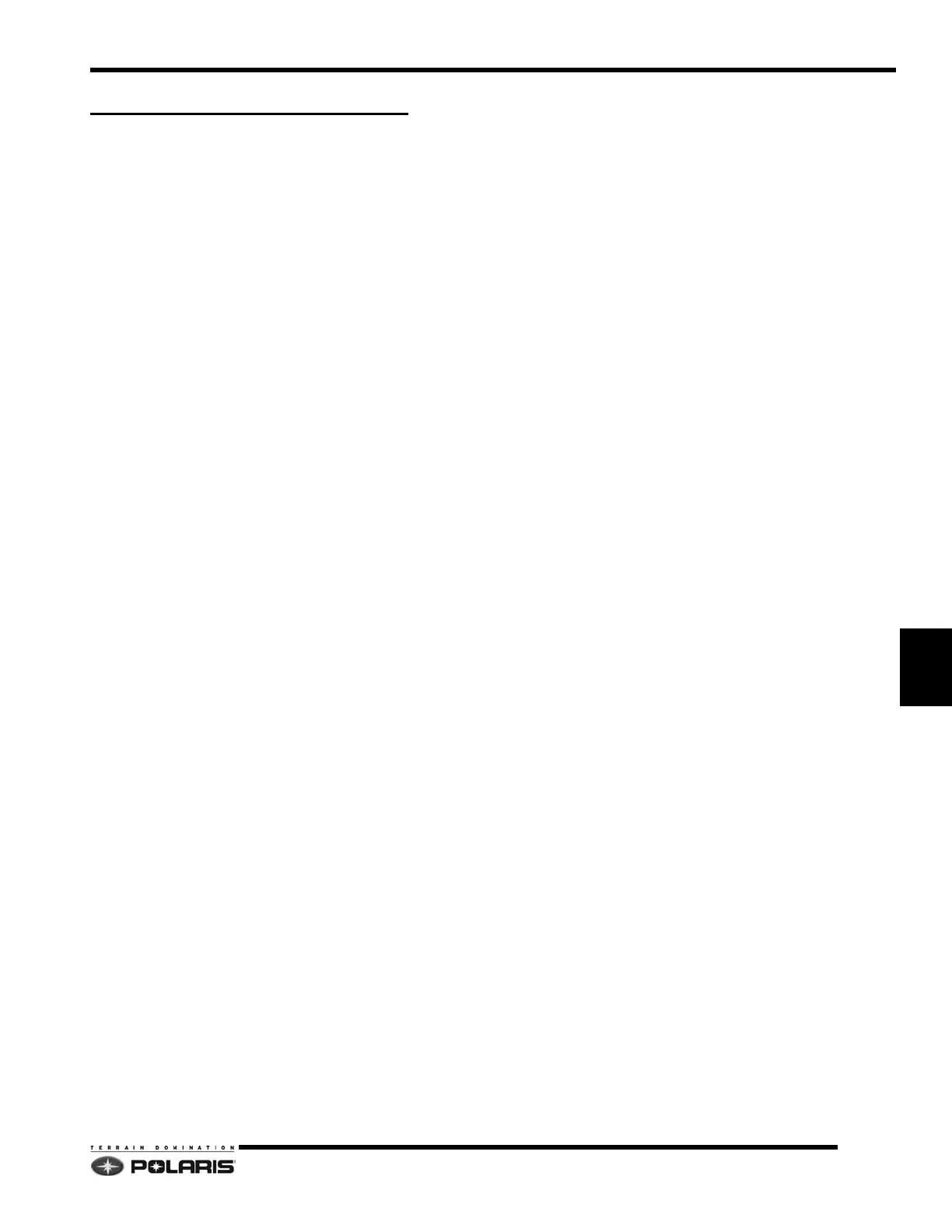